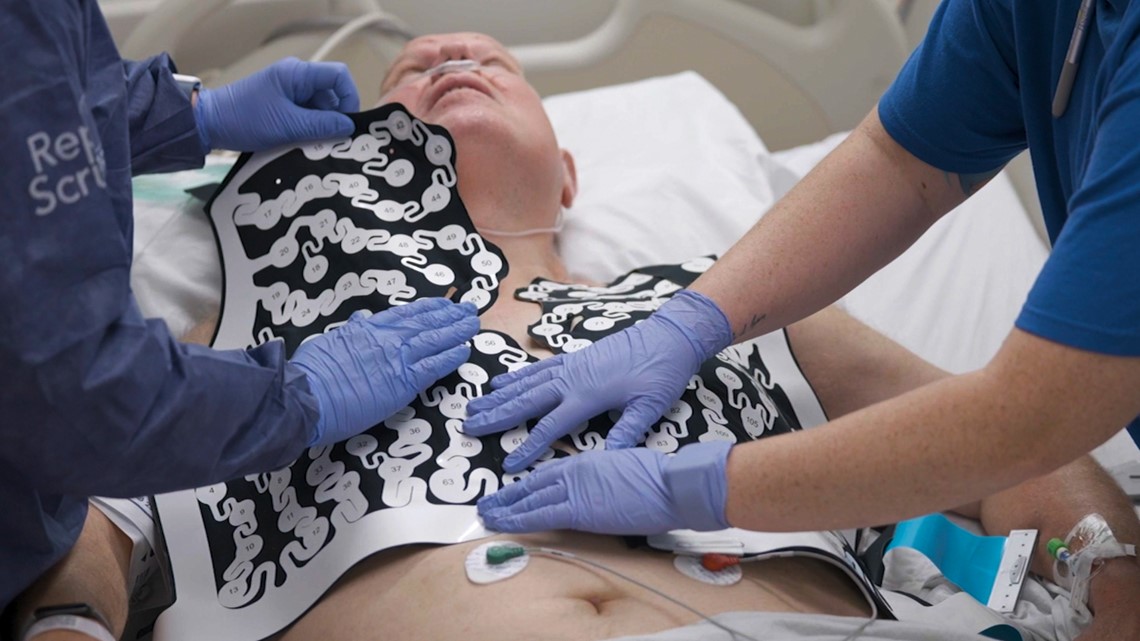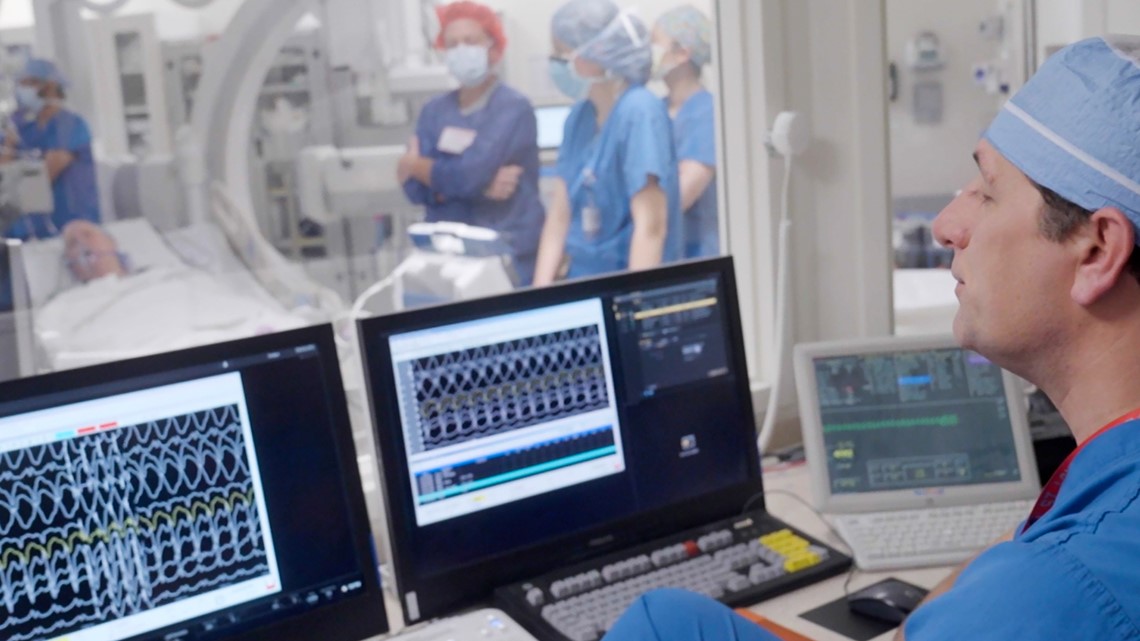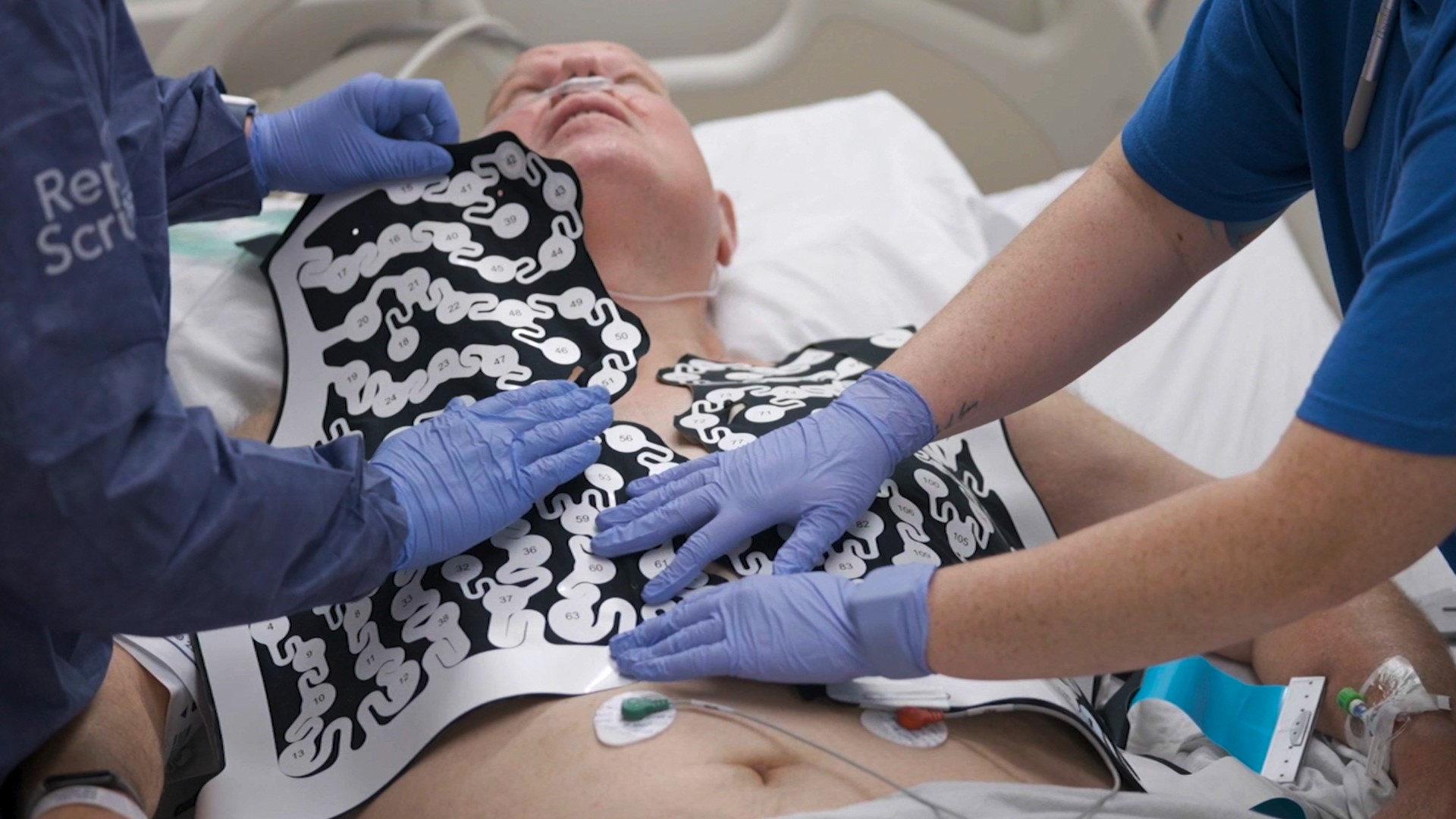ST. LOUIS — Doctors are zapping the heart with radiation normally reserved for cancer, a bid to better treat people with life-threatening irregular heartbeats who've exhausted other options.
While it's highly experimental, surprising early research suggests it may reprogram misfiring heart cells to control heartbeats more like younger, healthier cells do.
“It may actually rejuvenate sick tissue, and that’s pretty exciting,” said Dr. Stacey Rentschler of Washington University in St. Louis.
An irregular heartbeat called ventricular tachycardia is a major cause of sudden cardiac arrest, blamed for about 300,000 U.S. deaths a year. Treating it with radiation is a radical approach — cancer doctors are trained to avoid radiating the heart at all costs for fear of collateral damage.
Now researchers are about to begin the first rigorous study to prove if a quick, one-time dose to fight this irregular heartbeat really works well enough — and is safe enough — for more patients like Jeff Backus, who relapsed after standard care.
The Louisville man already had undergone an hours-long invasive procedure to keep his heart beating properly, and had a defibrillator implanted as a back-up. Then this winter, twice in about a month, Backus briefly passed out and awoke feeling like he'd been kicked in the chest. The defibrillator had had to save him, shocking his heart back into rhythm.
“You’re always in the back of your mind thinking, ‘Is it going to happen?’” Backus said. Out of other options to prevent another scary episode, he chose the experimental radiation in February — and so far is doing well. “It gave me some hope.”
The heart’s electrical system normally makes it beat with a steady lub-DUB, anywhere from 60 to 100 times a minute. Ventricular tachycardia is a super-fast heartbeat, unable to properly pump blood. It happens when those electrical signals short-circuit in the bottom chambers, the ventricles, often because of damage from a prior heart attack.
The main treatment: Doctors thread catheters inside the heart to identify and burn the misfiring tissue, creating scars that block bad signals. Some patients are too sick for this “catheter ablation” and for others, like Backus, the problem eventually returns.
Dr. Phillip Cuculich, a heart rhythm specialist at Washington University, came up with the idea for a no-incision alternative.
It takes a lot of up-front testing. Patients get a souped-up EKG, donning a vest covered in about 250 electrodes instead of the usual dozen to measure the heart’s electrical activity. Adding that to detailed medical scans gives Cuculich a three-dimensional map pinpointing where the heartbeat goes awry.
How to reach it? Cuculich teamed with Dr. Clifford Robinson, who specializes in precisely focused radiation to attack cancer while avoiding nearby healthy tissue.
Aiming at the heart “wasn’t on my radar at all. My goal was to miss the heart,” Robinson said. After all, some lung and breast cancer survivors experience heart disease years later from tumor radiation that reached and inflamed heart tissue.
But he agreed to try, warning patients about possible long-term risks. His very first arrhythmia patient responded, “You're concerned about something that might happen 10 or 20 years from now? I'm worried about tomorrow,” Robinson recalled. “That was really eye-opening.”
Patients lie in the same machine that normally blasts cancer, held in place and listening to music while customized beams hit the just the right spot. It can take as little as 15 minutes.


Cuculich and Robinson reported the first successes in 2017 and 2019, experiments with small numbers of desperately ill patients who showed dramatic improvement. They say some are doing well up to six years later.
While it's not approved by the Food and Drug Administration, the duo has since gotten permission to treat about 80 more people on a case-by-case basis, some, like Backus, not as sick as the earlier patients. And the St. Louis team has taught the technique to dozens of other hospitals in the U.S. and abroad that are cautiously trying it.
But the FDA requires stronger evidence for more routine use — and the more hospitals offer “off-label” radiation to these heart patients, the harder it will be to get that proof.
Now in an international study, sponsored by device maker Varian, nearly 400 patients will be randomly assigned to either radiation or another catheter ablation to directly compare how they fare. Washington University just began recruiting potential participants; additional sites are set to open soon.
The bigger mystery: How the radiation prevents arrhythmias. Cuculich thought it would work by simply copying catheter ablation's scarring but was stunned when scans showed "we weren't actually causing a new scar — and that's a big deal.”
Rentschler, a developmental biologist who also treats heart patients, took a closer look. Tests with donated human hearts and mouse hearts suggest the one-time moderate dose of radiation was prompting the misfiring cells to repair themselves.


In areas that got zapped, heart muscle cells temporarily switched on certain genes that normally are dormant in adulthood. Among them: a signaling pathway called “Notch” that helps a developing heart form its electrical system.
Reactivating that pathway “is perking up those areas” so they conduct electrical signals more like when they were younger, Rentschler explained. “We’ve never had any treatment that could do that.”
That's very different than how repeat radiation doses can obliterate tumors. Now Rentschler's research team is testing human heart cells in lab dishes, measuring exactly how they conduct electrical impulses — in hopes that even lower radiation doses might work.
“It’s really important that we get this right ... that we figure out what the safe doses are and if there’s areas that we should be worried about,” Cuculich said.
___
The Associated Press Health and Science Department receives support from the Howard Hughes Medical Institute’s Science and Educational Media Group. The AP is solely responsible for all content.

